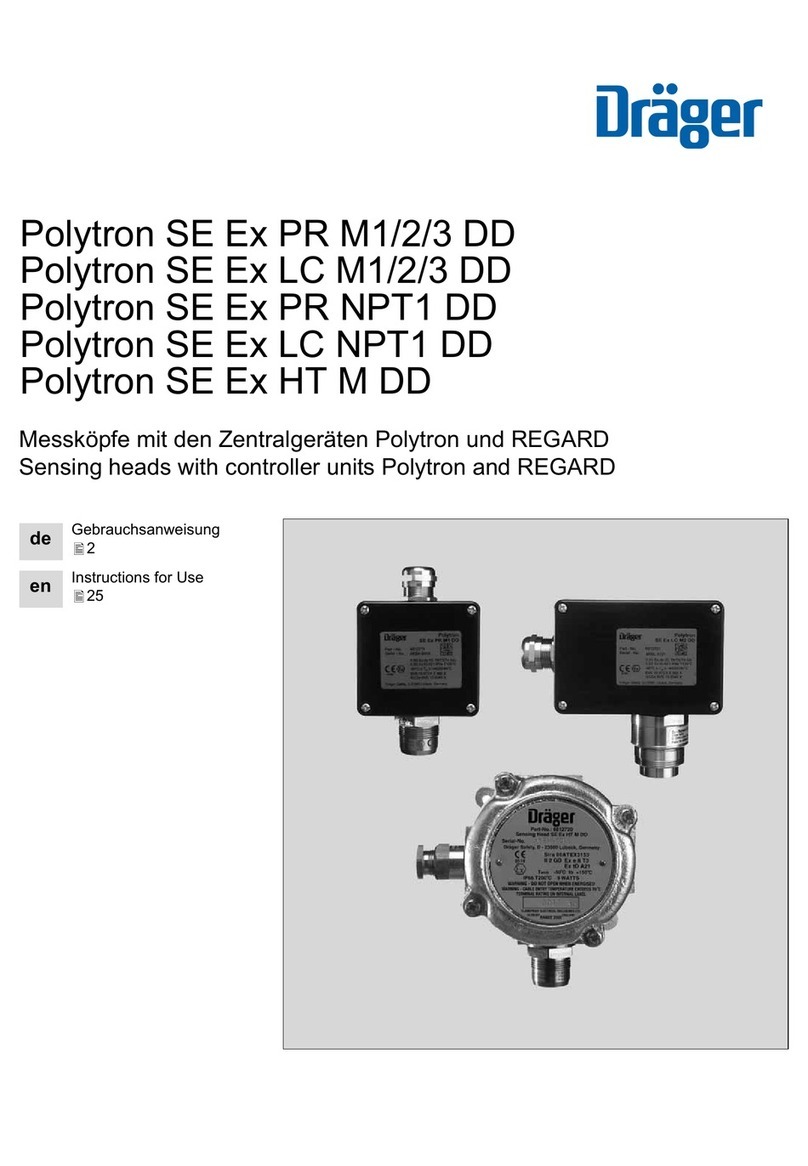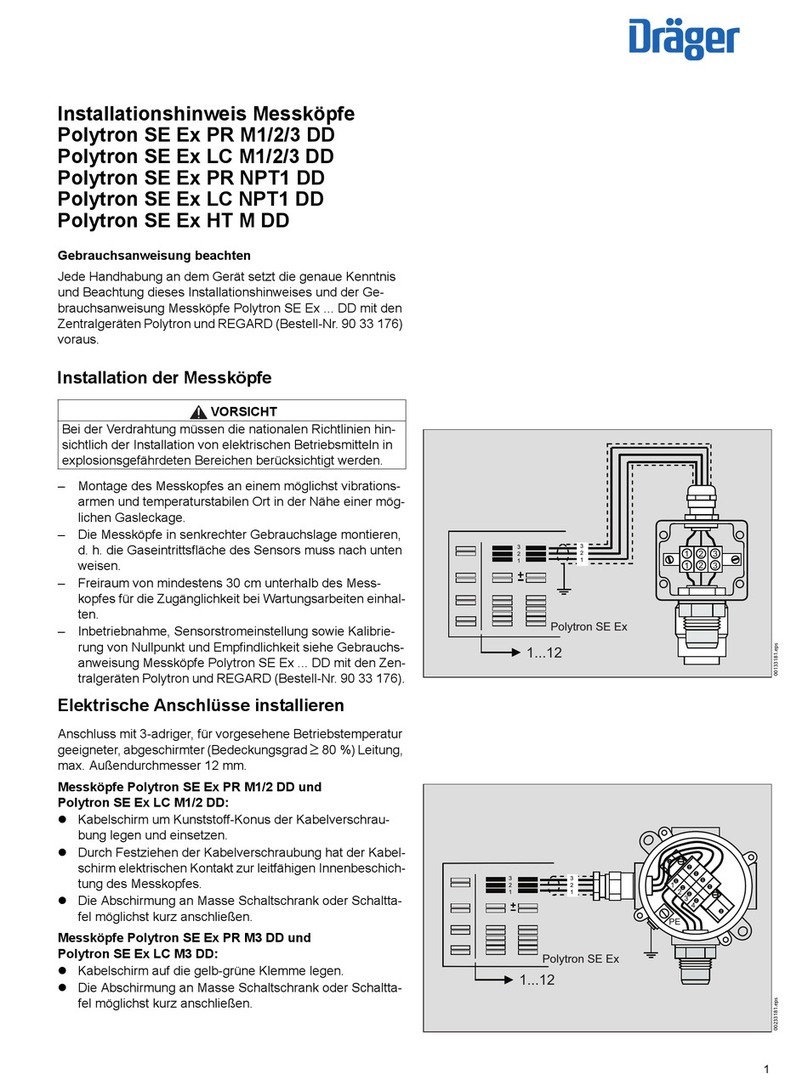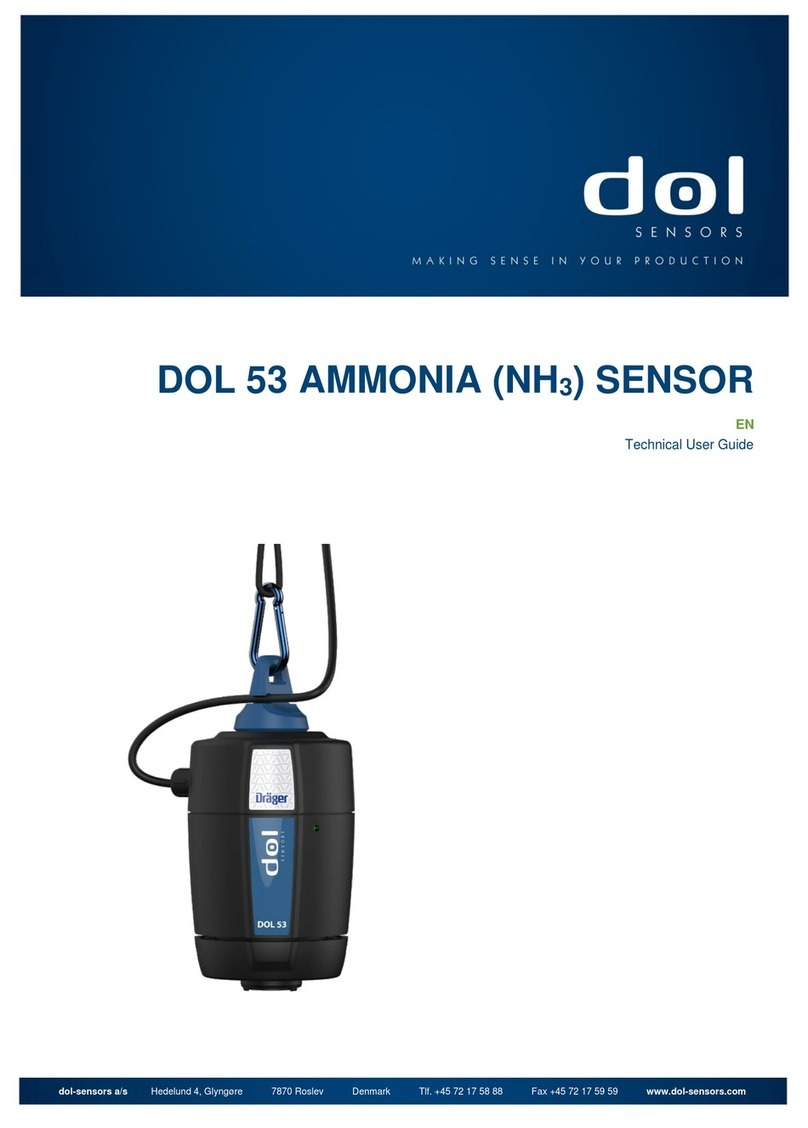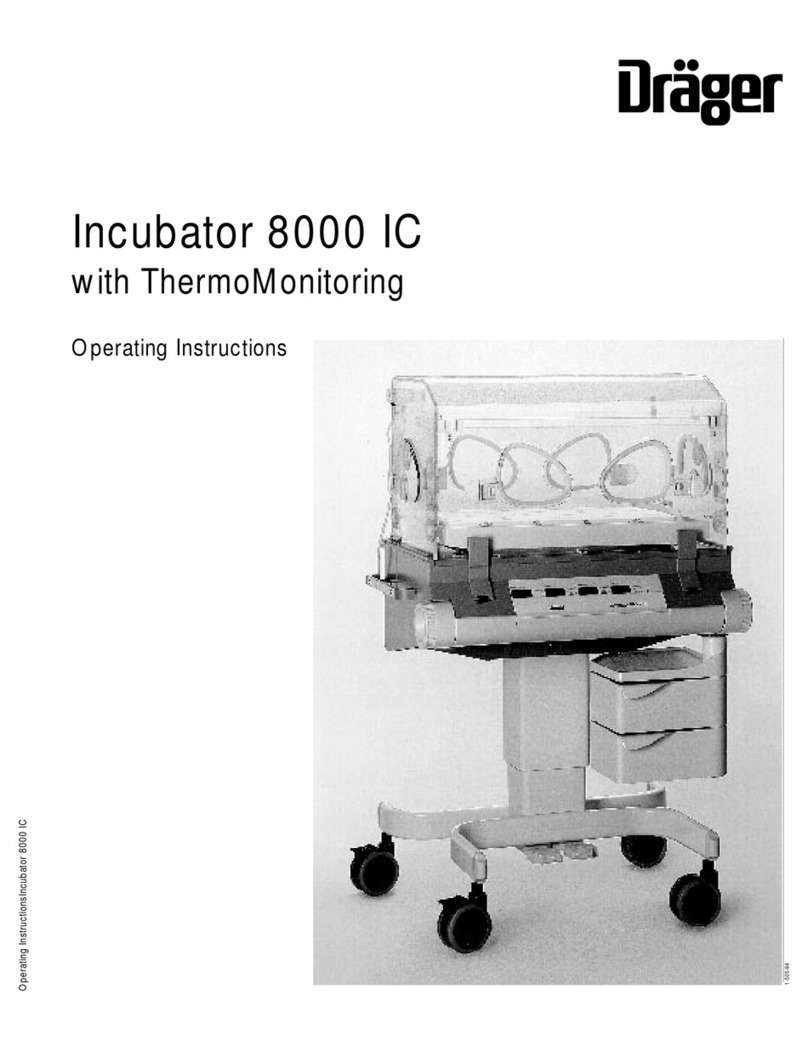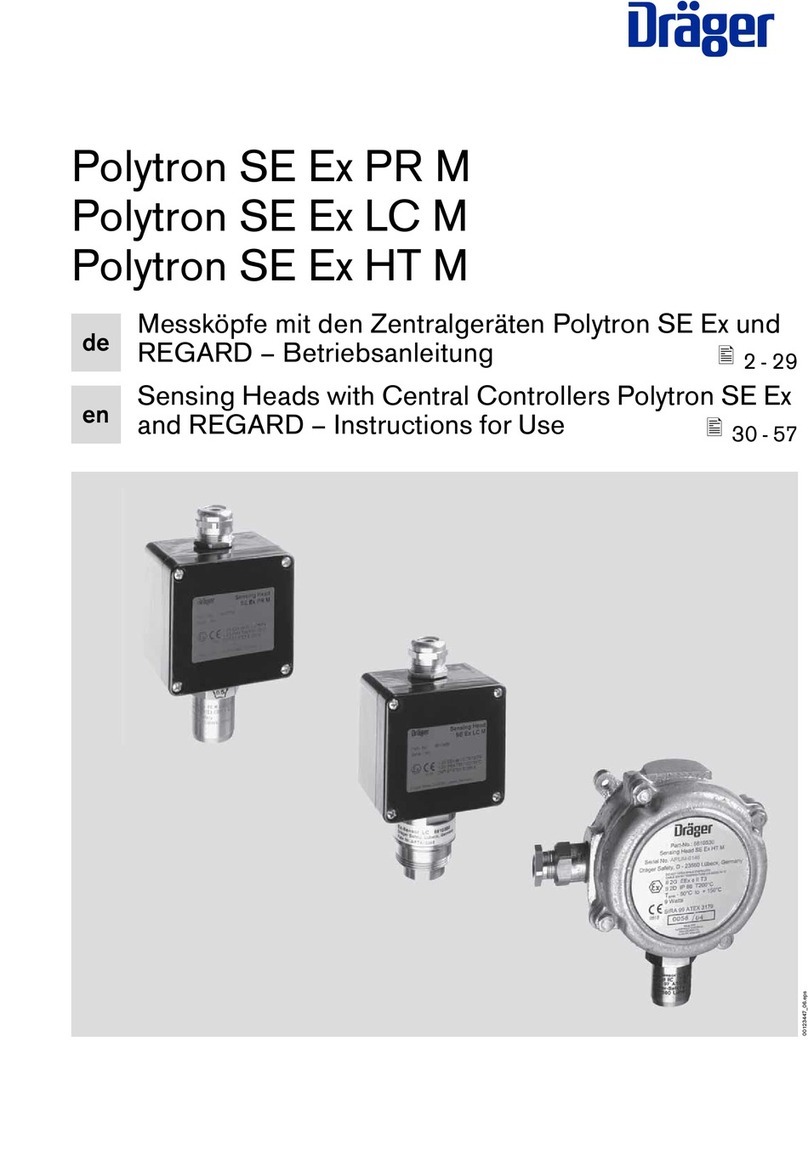
For Your Safety and that of Your
Patients
For correct and effective use of the apparatus and to
avoid hazards it is essential to read the following recom-
mendations and to act accordingly1):
Strictly follow the Instructions for Use
Any use of the apparatus requires full understanding and
strict observation of these instructions. The apparatus is
only to be used for purposes specified here.
Maintenance
The apparatus must be inspected2) and serviced2) regu-
larly by trained service personnel at six monthly intervals
(and a record kept).
Repair2) and general overhaul of the apparatus may only
be carried out by trained service personnel.
We recommend that a service contract be obtained with
DrägerService and that all repairs also be carried out by
them. Only authentic Dräger spare parts may be used for
maintenance2).
Observe chapter "Maintenance Intervals".
Power connection
The apparatus is to be used only in rooms with mains
power supply installations complying with national safety
standards (such as in F. R. of Germany: VDE 0107).
The requirements laid down in IEC 601-1 "Safety of
Medical Electrical Equipment" are applicable for
electrically powered equipment.
Not for use in areas of explosion hazard
This apparatus is neither approved nor certified for use in
areas where combustible or explosive gas mixtures are
likely to occur.
Safe connection with other electrical equipment
Electrical connections to equipment which is not listed in
these Instructions for Use should only be made following
consultations with the respective manufacturers or an
expert.
Liability for proper function or damage
The liability for the proper function of the apparatus is
irrevocably transferred to the owner or operator to the
extent that the apparatus is serviced or repaired by
personnel not employed or authorized by DrägerService
or if the apparatus is used in a manner not conforming to
its intended use.
Dräger Medizintechnik GmbH cannot be held responsible
for damage caused by non-compliance with the
recommendations given above. The warranty and liability
provisions of the terms of sale and delivery of Dräger
Medizintechnik GmbH are likewise not modified by the
recommendations given above.
Dräger Medizintechnik GmbH
1)
Insofar as reference is made to laws, regulations or standards, these
are based on the legal system of the Federal Republic of Germany.
2)
Definitions according to DIN 31 051:
Inspection = examination of actual condition
Service = measures to maintain specified condition
Repair = measures to restore specified condition
Maintenance = inspection, service, repair
3
For Your Safety and that of Your Patients


